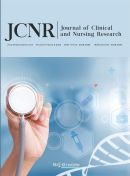Abstract
Background: Shoulder dysfunction is very common after mastectomy, and there is also less follow-up for physiotherapy services among patients with mastectomy. Objective: A study was conducted to determine the role of nurse-assisted home-based range of motion (ROM) exercises in patients with shoulder dysfunction after mastectomy. Methods: A pre- and post-interventional study design was used to collect data from 30 post-mastectomy patients. The subjects were selected on a voluntary basis. Informed consent was obtained from post-mastectomy patients who were discharged from different oncology hospitals in Pakistan prior to their inclusion in this study. After obtaining a baseline measurement, the patients were supervised with nurse-assisted ROM exercises at home. The nurse-assisted home-based ROM exercise program was designed for such patients, and the patients were followed-up for up to 1 month. The total duration of the study was 1 year from August 2015 to August 2016. Post-intervention measurement was performed at the patients’ home. The difference in terms of pain reduction and ROM improvement at the shoulder joint was recorded using goniometric measurements and the 100 mm visual analogue scale (VAS). Results: The mean age of the 30 subjects was 39.83 ± 5.89. The mean ROM of shoulder flexion before the exercise program was 106.03°, which improved to 133.93° after 1 month of the exercise program. The mean ROM of shoulder abduction before treatment was 94.83°, which improved to 127.13° after 1 month of supervised exercise program. The mean ROM of shoulder rotation before the exercise program was 127.53°, which improved to 152.03° after 1 month of the exercise program. Conclusion: The nurse-assisted home-based shoulder ROM exercise program is effective in terms of improving the range of motion and reducing pain at the shoulder joint in post-mastectomy patients.
References
de Rezende LF, Franco RL, de Rezende MF, et al., 2006, Two Exercise Schemes in Postoperative Breast Cancer: Comparison of Effects on Shoulder Movement and Lymphatic Disturbance. Tumori; 92(1): 55.
Silver JK, Gilchrist LS, 2011, Cancer Rehabilitation with a Focus on Evidence-Based Outpatient Physical and Occupational Therapy Interventions. American Journal of Physical Medicine & Rehabilitation, 90(5): S5–S15.
Jemal A, Siegel R, Xu J, et al., 2010, Cancer Statistics, 2010. CA Cancer J Clin, 60(5): 277–300.
Nesvold I-L, Reinertsen KV, Fossa SD, et al., 2011, The Relation Between Arm/Shoulder Problems and Quality of Life in Breast Cancer Survivors: A Cross-Sectional and Longitudinal Study. Journal of Cancer Survivorship, 5(1): 62–72.
Peuckmann V, Ekholm O, Rasmussen N, et al., 2009, Chronic Pain and Other Sequelae in Long?Term Breast Cancer Survivors: Nationwide Survey in Denmark. European Journal of Pain, 13(5): 478–485.
Mascaro A, Farina M, Gigli R, et al., 2010, Recent Advances in the Surgical Care of Breast Cancer Patients. World J Surg Oncol, 8: 5.
Carpenter JS, Sloan P, Andrykowski MA, et al., 1999, Risk Factors for Pain After Mastectomy/Lumpectomy. Cancer Practice, 7(2): 66–70.
Pinto BM, Maruyama NC, 1999, Exercise in the Rehabilitation of Breast Cancer Survivors. Psychooncology, 8(3): 191–206.
Oldervoll L, Kaasa S, Hjermstad M, et al., 2004, Physical Exercise Results in the Improved Subjective Well-Being of a Few or Is Effective Rehabilitation for All Cancer Patients?. Eur J Cancer, 40(7): 951–962.
De Boer AGEM, Taskila TK, Tamminga SJ, et al., 2011, Interventions to Enhance Return-to-Work for Cancer Patients. Cochrane Database of Systematic Reviews, 2(2): CD007569.
DeSantis C, Siegel R, Bandi P, et al., 2011, Breast Cancer Statistics, 2011. CA Cancer J Clin, 61(6): 409–418.
Lee TS, Kilbreath SL, Refshauge KM, et al., 2008, Prognosis of the Upper Limb Following Surgery and Radiation for Breast Cancer. Breast Cancer Research and Treatment, 110(1): 19–37.
Kilgour RD, Jones DH, Keyserlingk JR, 2008, Effectiveness of a Self-Administered, Home-Based Exercise Rehabilitation Program for Women Following a Modified Radical Mastectomy and Axillary Node Dissection: A Preliminary Study. Breast Cancer Research and Treatment, 109(2): 285–295.
Bonnema J, van Geel AN, Ligtenstein DA, et al., 1997, A Prospective Randomized Trial of High Versus Low Vacuum Drainage After Axillary Dissection for Breast Cancer. The American Journal of Surgery, 173(2): 76–79.
Gosselink R, Rouffaer L, Vanhelden P, et al., 2003, Recovery of Upper Limb Function After Axillary Dissection. Journal of Surgical Oncology, 83(4): 204–211.
McNeely ML, Binkley JM, Pusic AL, et al., 2012, A Prospective Model of Care for Breast Cancer Rehabilitation: Postoperative and Postreconstructive Issues. Cancer, 118(S8): 2226–2236.
Stubblefield MD, Bilsky MH, 2007, Barriers to Rehabilitation of the Neurosurgical Spine Cancer Patient. Journal of Surgical Oncology, 95(5): 419–426.
Duncan MA, Lotze MT, Gerber LH, et al., 1983, Incidence, Recovery, and Management of Serratus Anterior Muscle Palsy After Axillary Node Dissection. Physical Therapy, 63(8): 1243–1247.
